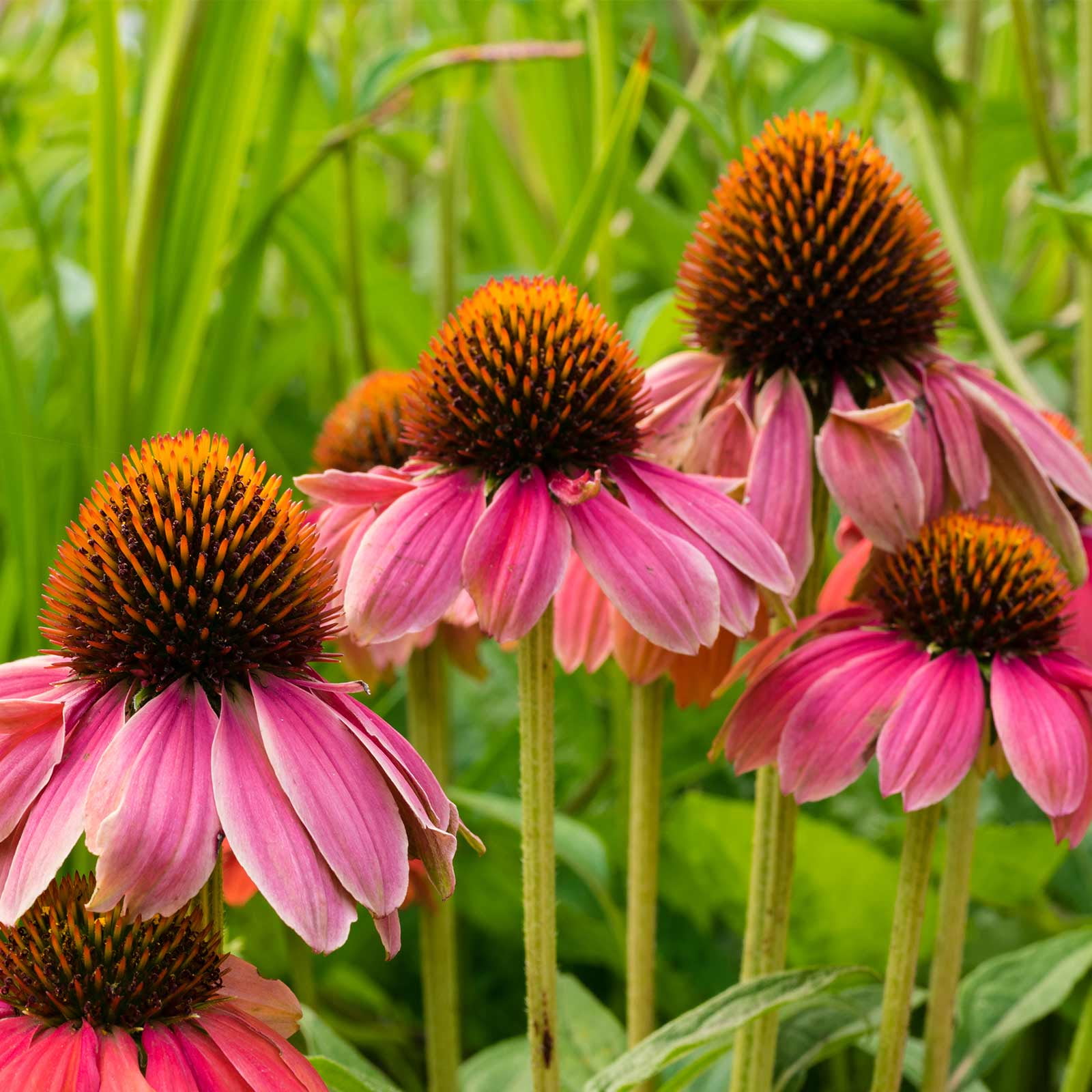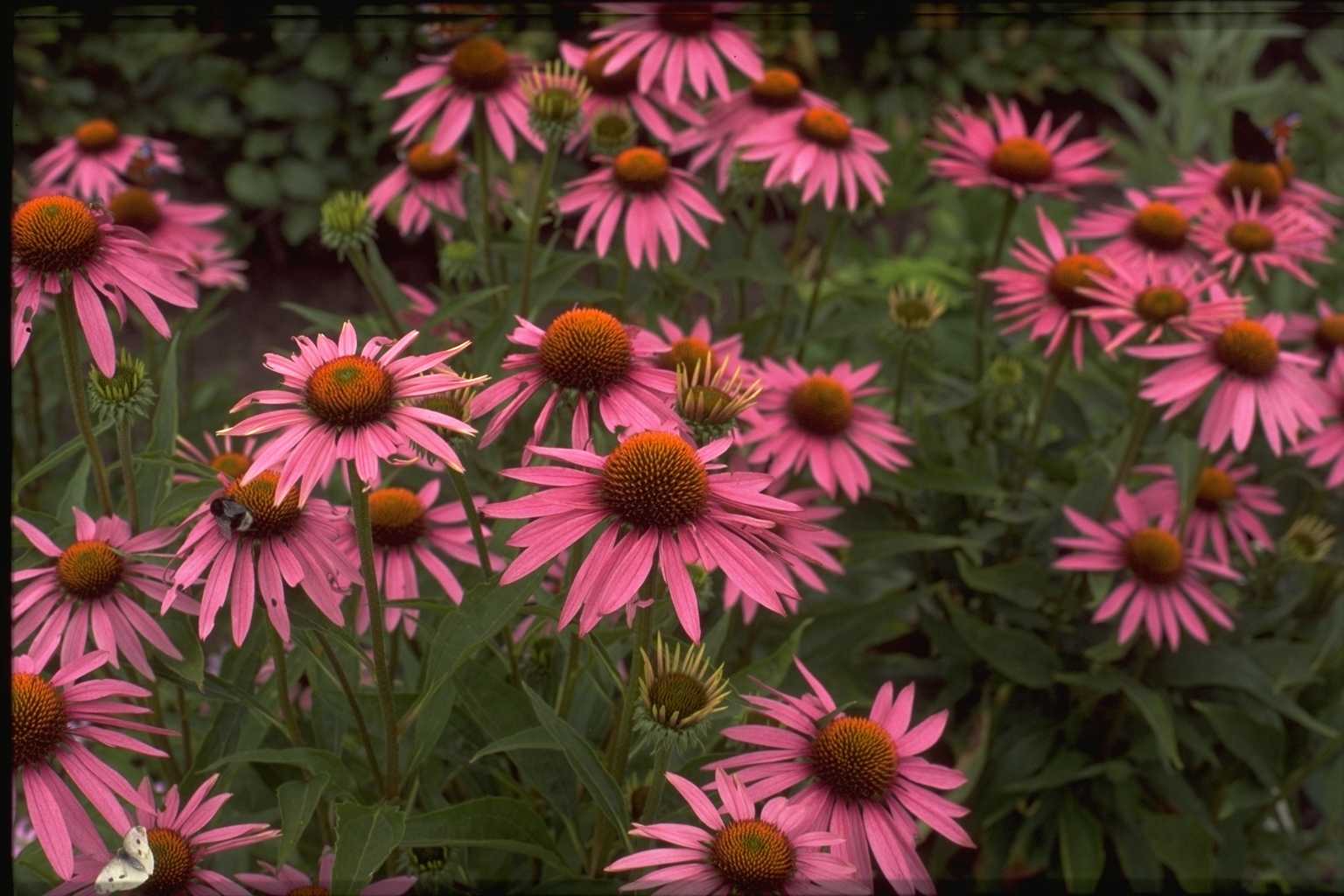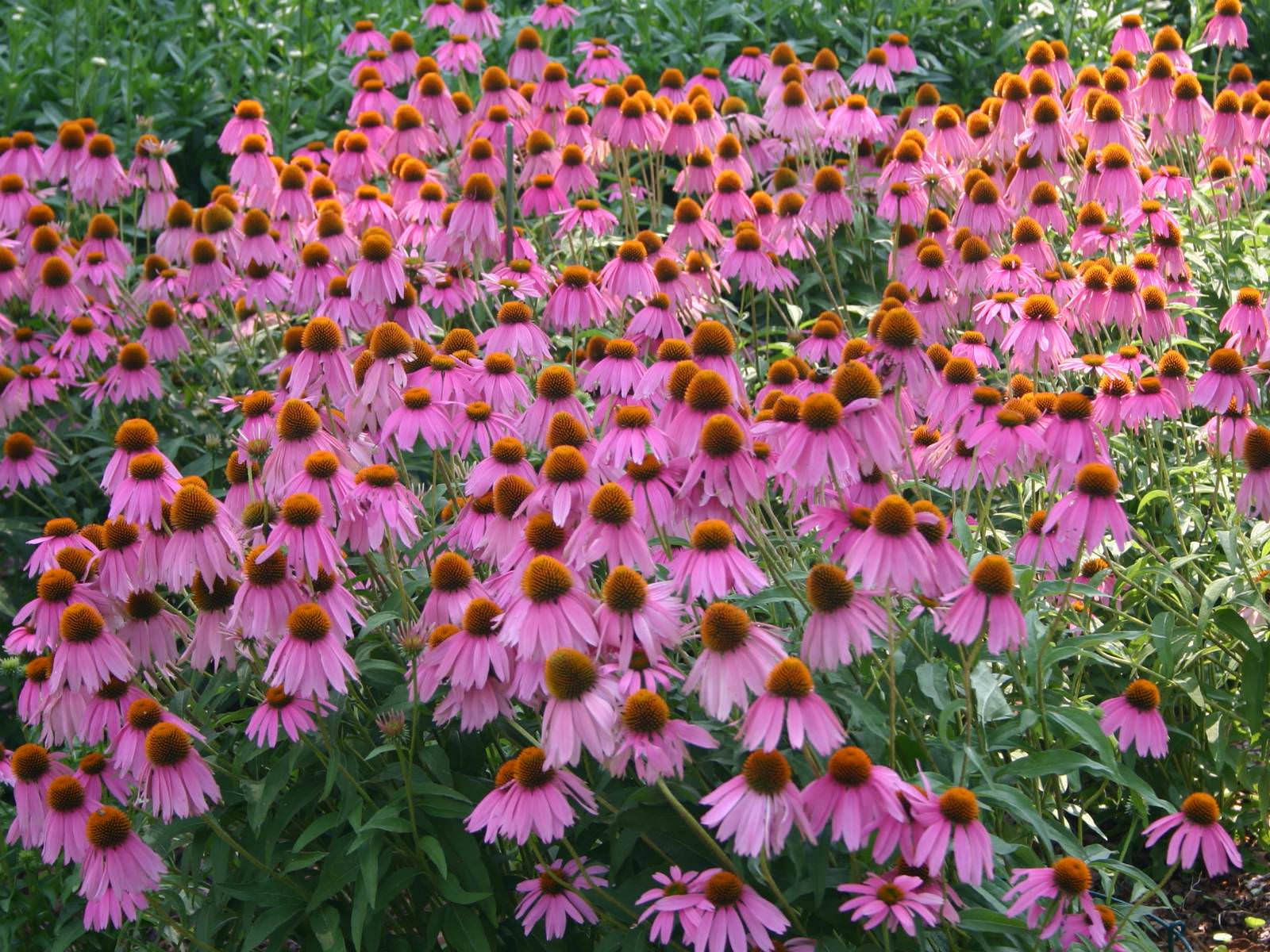

In addition, the ingredients support respiratory or urinary tract infections. For some years now the perennial has also been known to us for its effect as a natural remedy: The substances contained in the above-ground plant parts, for example alkamides, essential oils and caffeic acid derivatives, have a positive effect on the immune system. The purple sun hat was already used by the natives of North America as an antiseptic against inflammation. The long flower stems are impressive cut flowers. The nectar-rich perennial, which attracts numerous butterflies and bees, is also very effective in open spaces that are close to nature. You should do this every four to five years, preferably in spring.Įchinacea purpurea works very well in sunny borders, for example in combination with asters, goldenrods, ornamental grasses or Rudbeckien. Then a rejuvenation cure by division will help: Dig out the rootstock, divide it up and replant the parts. Composting in the spring and occasional stinging nettle liquid manure are also good for the plant to thrive.Īs the years go by, Echinacea purpurea’s joy in flowering diminishes and it no longer sprouts so vigorously.

A pruning directly after flowering prolongs the life time. It is necessary to remove withered flowers regularly. Once the shrub has gained a foothold, it is relatively easy to maintain.

The plant is relatively short-lived, so you should cut it back to a hand’s breadth above the ground immediately after flowering and divide it every few years. The purple coneflower thrives best on nutrient-rich, permeable soils that are not too heavy. Although semi-shade places are also possible, Echinacea purpurea will plant fewer flowers in such places. The magnificent shrub needs a sunny place as a location. The flowers magically attract butterflies and bees.Įchinacea purpurea forms grey-white, up to five millimetre long split fruits, so-called achenes. There are now also varieties with white, yellow and orange-red flowers. The stem leaves are slightly smaller.įrom July to September, up to twelve centimetres wide, marguerite-like flower heads appear with purple-pink ray florets and a highly arched, brown-red centre, the so-called basket. The basal leaves are ovoid, toothed, rough-haired, dark green and up to 15 centimetres long. In winter the above-ground parts of the plant freeze to death, but in spring Echinacea purpurea reliably sprouts again. The perennial shrub grows to a height of between 80 and 100 centimetres. From a strong tap root with numerous vertically growing secondary roots, upright stems hairy with bristles grow. Meanwhile, there are numerous colorful breeds of Echinacea purpurea. In the United States, the purple sun hat only appeared in the second half of the 18th century. The botanical name Echinacea is derived from the Greek word “echinos”, which also means “hedgehog”. The term “hedgehog’s head” refers to the prickly texture of the flower heads. The perennial owes its German name to the shape of the flower base, which resembles a pointed hat. If one compares the two perennials more closely with each other, however, clear differences can be determined. However, the degree of kinship between the two perennials is still hotly debated among botanists. With the yellow sunhat (Rudbeckia), the purple sunhats – for some years – are officially no longer closely related, although the plants look very similar at first sight. Meanwhile Rudbeckia and Echinacea are assigned to two different botanical genera. Only 1794, the genus received its until today valid name Echinacea through Conrad Moench (1744-1805). Carl von Linné gave the species the name Rudbeckia purpurea in 1753, with which it was assigned to the genus Rudbeckia.

In 1696 the perennial was first described in England by the botanist Leonard Plukenet (1642-1706) as “Chrysanthenum americanum” because he discovered similarities with the garden chrysanthemum. Already with the Indians the wild perennial was considered as antiseptic medicinal plant and is used today in many cold preparations. The purple coneflower (Echinacea purpurea), also known as the red coneflower coneflower or hedgehog’s head, is a very popular garden perennial from the Asteraceae family, which originally comes from the prairies of North America.


 0 kommentar(er)
0 kommentar(er)
